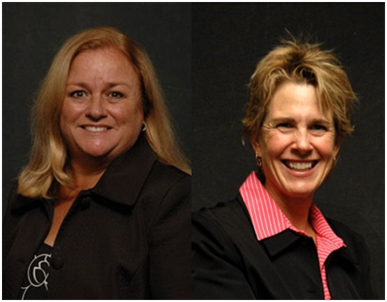Hospitality students thrive in both virtual and traditional classrooms

From left to right, Melany Spielman and Mary Fortune
- March 21, 2011 5:17am
Mary F. Fortune and Melany Spielman, faculty in the department of hospitality, recreation and tourism, and Dean T. Pangelinan, alumnus of the Cal State East Bay graduate statistics program, published their research on the implications of learning online versus face-to-face in higher education in the recent issue of, "Journal of Online Learning and Teaching."
Some disciplines were early adopters of online mediated teaching but hospitality, recreation, and tourism (HRT) has historically used a hands-on learning approach with a concentration on social interaction. Their study, “Students’ Perceptions of Online or Face-to-Face Learning and Social Media in Hospitality, Recreation and Tourism,” looks specifically at the learning perceptions and the use of leisure time of students enrolled in a traditional HRT program of study at an urban four-year university in Northern California.
The authors were interested in assessing whether or not students can develop and grow as HRT professionals with the desirable skills in leadership, interpersonal relationships, and customer service in a cutting-edge, high tech teaching environment with little or no physical contact. They found that no statistically significant difference in learning preference was found between those enrolled in the two different learning modes. Students in both learning platforms felt strongly that their chosen mode was the best for them. Participants were able to develop, grow, and be creative while learning in a cutting-edge, high tech environment with little or no physical contact.
Download paper (PDF)
KL